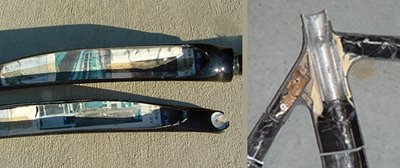 It will probably come as no surprise to most of you that I subscribe to several different email newsletters from the various big bike companies. For the most part, they are full of the same marketing copy that you might find on the company’s websites. Of course there are always exceptions. One newsletter that I always find to have interesting new content is Zapata Espinosa’s “Exit 180” from Trek (Zap, if you are reading, I am a big fan of your work going back to my first Mountain Bike Action subscription in the late 80’s). If you are interested in bikes and don’t already receive it, I recommend that you sign up on Trek’s website.
It will probably come as no surprise to most of you that I subscribe to several different email newsletters from the various big bike companies. For the most part, they are full of the same marketing copy that you might find on the company’s websites. Of course there are always exceptions. One newsletter that I always find to have interesting new content is Zapata Espinosa’s “Exit 180” from Trek (Zap, if you are reading, I am a big fan of your work going back to my first Mountain Bike Action subscription in the late 80’s). If you are interested in bikes and don’t already receive it, I recommend that you sign up on Trek’s website.
The latest Exit 180 showed the above picture of a carbon fork with Chinese newspaper lining the inside walls. Apparently Trek found this while analyzing a competitor’s product. It makes for a funny picture and certainly pinpoints the fork’s country of origin, but newspaper inside a fork is not all that disturbing on its own. What is disturbing is the picture to the right, also from the Trek newsletter. This competitor’s frame is full of clay and foam at the seat tube cluster. It is hard to tell what else might be in there, Bondo, Great Stuff, sawdust, spitballs; who really knows? Suffice it to say this is not the type of material that you necessarily want to find inside a really expensive bike frame. At least it is not the kind of stuff I want in my frame. The materials themselves might not be so bad, but they certainly indicate a less than perfect manufacturing process. Which brings me to a question; do you as consumers care how your carbon frames are made? In my opinion, you should. With the incredible number of carbon fiber bikes currently on the market from companies big and small, some are just bound to be inferior. I am not saying that bigger is always better, but I do think it is great that companies like Trek and Giant choose to reinforce their engineering strengths in there marketing materials. Whether you believe it or not, investing in design, engineering, and R&D resources is necessary if a company wants to make better products. Marketing hype alone won’t make a better (or safer) bike. Still, boutique carbon frames are very popular now. To each his own, but I wouldn’t buy one. Let me know if you disagree.

Leave a Reply to jeanthibca Cancel reply